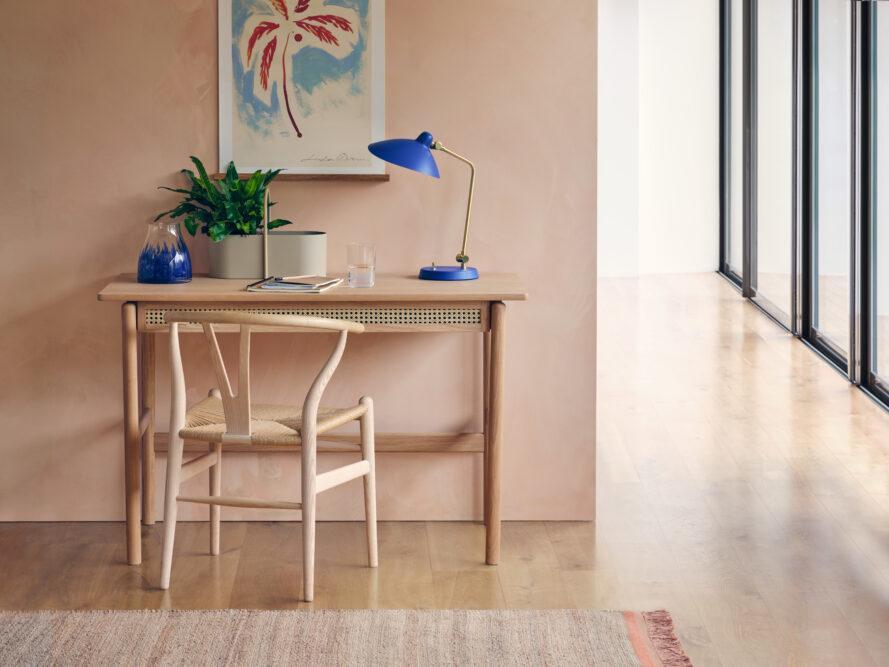
Suddenly, working from home is the new normal, an established feature of professional life. It even has its own acronym – WFH. And as usual, Weston Homes is ahead of the game. Its latest new homes factor in desk spaces, shown in brochure layouts, along with extra power points, superfast broadband throughout and full-height feature windows letting in plenty of the natural daylight that’s so important for health and boosting mood. There’s usually a private terrace or balcony that’s just right for a one-person think tank, or for informal meetings outside in virus-free air. “And thoughtfully, we have instant boiling water taps as standard, for those vital tea and coffee breaks,” says Suzanne Aplin, Weston Homes’ Group Sales and Marketing Director.
First, decide where your home office will be
Chloe Rosamond, long-term Weston Homes show home designer, has WFH totally taped. “We start off with the best space for a desk and consider, most importantly, how it impacts the area around it. Maybe you have a dedicated room for a study, which is ideal, but a lot of people don’t. So think outside the box.
“You could use a dressing table or console table in a bedroom. They are typically a lot smaller than standard desks, so they’ll go into most spaces without obstructing the room. And they come in luxurious finishes, so sit well in a bedroom. We used a beautiful ivory and bronze model with drawers under, in Weston Homes’ new Springfield Park show home in Maidstone, Kent, for a WFH space that does not compromise the interior design.”
A workspace you can hide away
Next, you must consider storage. Have a desk or dressing table with drawers so you can easily tuck away your laptop, notebook, pens and paper when it’s time to reclaim your space and put work firmly out of your mind.
However, if you crave an uber-elegant, streamlined desk without drawers, you’ll need storage elsewhere. This could be a large sideboard in the living room. Happily, sideboards – mid-century staples – came back into fashion some five years ago, so there are plenty of styles to choose from now. Chloe installed one at The Venue, a Weston Homes development in Hayes, west London. “And maybe add drawers under a coffee table,” she suggests, as in the Weston Homes show home at Gun Hill Park in Aldershot. This has a very streamlined, minimalist desk with a bookcase nearby, “providing plenty of storage, possibly for teenagers or university students who are studying from home”. Where space is very restricted, you could solve the problem with a desk that’s designed to hang on the wall and drop down when needed. But make sure it’s firmly fixed in place – best to call in a professional.
And think about that WFH chair. After all, you’ll be in it for a lot of the day. “If it’s just an occasional space for working, then a dining chair or dressing table chair would be okay, like we did recently at Weston Homes’ Queens Walk development in East Grinstead,” says Chloe. “But if it’s a daily WFH affair, then have, at the very least, a swivel chair.” And when the nights draw in, add a throw or a sheepskin for a touch of home-office luxe. The best option, of course, is an ergonomically designed chair, to support your spine. Chloe reports: “We’ve been really surprised by the well-designed swivel chairs which have now hit the market. They are daringly designed with coloured bases and lovely fabrics. Gone are the days of grey and black plastic.”
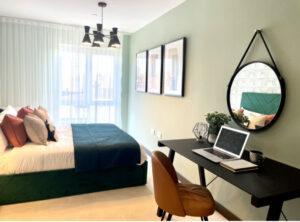
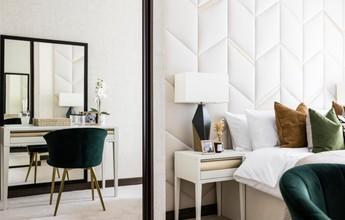
Your essential home office kit
For WFH basics, try Futon Company, where the energetic in-house design team is continually refining products to suit modern needs. Here, a mini desk costs as little as £99. Equally compact is an oak standing desk – good for a multi-tasking parent doing quick screen checks (futoncompany.co.uk; promotions change weekly).
Have an uncluttered space for Zoom calls. Obviously avoid views of unmade beds or piles of dirty dishes. Baskets and boxes can keep things inexpensively under control. This is your space so you could be creative, hanging wallpaper, or adding paint in a favourite colour and a pinboard that’s alive with snaps, postcards and maybe the odd copy invoice.
“You get style freedom when you work from home,” says author Joanna Thornhill, whose best-selling 2014 Home for Now décor manual was reissued recently with the new title of Insta Style for Your Living Space (£9.99, Cico Books) It’s packed with off-piste creativity. You could think laterally for your desk. Perhaps use a flush door on two trestles with a glass top. Or an old kitchen table with useful drawers. Or a foldaway “drop-leaf” table. Storage boxes could be vintage crates, or mini-trunks or rustic baskets. And don’t forget artwork, plants, and maybe some small ceramics or glass. Mad About the House: 101 Interior Design Answers is by the popular podcaster/blogger Kate Watson-Smyth (Pavilion, £20). She chats about where to site your home office – best being a friendly spare bedroom with sofa bed – and even suggests nesting a desk in a wardrobe.
But for something more substantial, elegant and long-term, explore SCP in Shoreditch, east London, where designers include British veterans Matthew Hilton, Sarah Kay, Pearson Lloyd, and Terence Woodgate. Every day you will tune in to superb desk design with a fine finish designed to last, with an uplift of mood (from around £500 to £2,500). And as always, Heal’s is dependable here (heals.com).
Find dozens of genuine vintage models from around £300 at pamono.co.uk or for handmade industrial style in wood and metal, there’s Steel Vintage of Bristol (steelvintage.com). For an affordable icon, with a proven track record, consider the String wall storage system, designed in 1949 by a pair of architects as shelving for a public library. Its minimalist ladders can support storage and a desk – available from John Lewis. Find an online planner and more stockists at stringfurniture.com/build-your-own.
Well-established officereality.co.uk has basic desks from around £110 with corner models at £150. Three-drawer storage units start from around £90. Blue Spot Furniture has its own factory in Yorkshire, and a website packed with advice (bluespotfurniture.com). “Meticulous measuring” is the company’s mantra: “Use masking tape to outline a proposed desk’s footprint on the floor.”
Cables typically are spaghetti junction – good desks have “cable management”, while printers and keyboards can now be wireless. Find neat ways to organise your cables at Office Reality (as before).
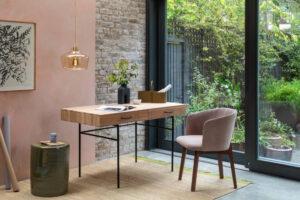
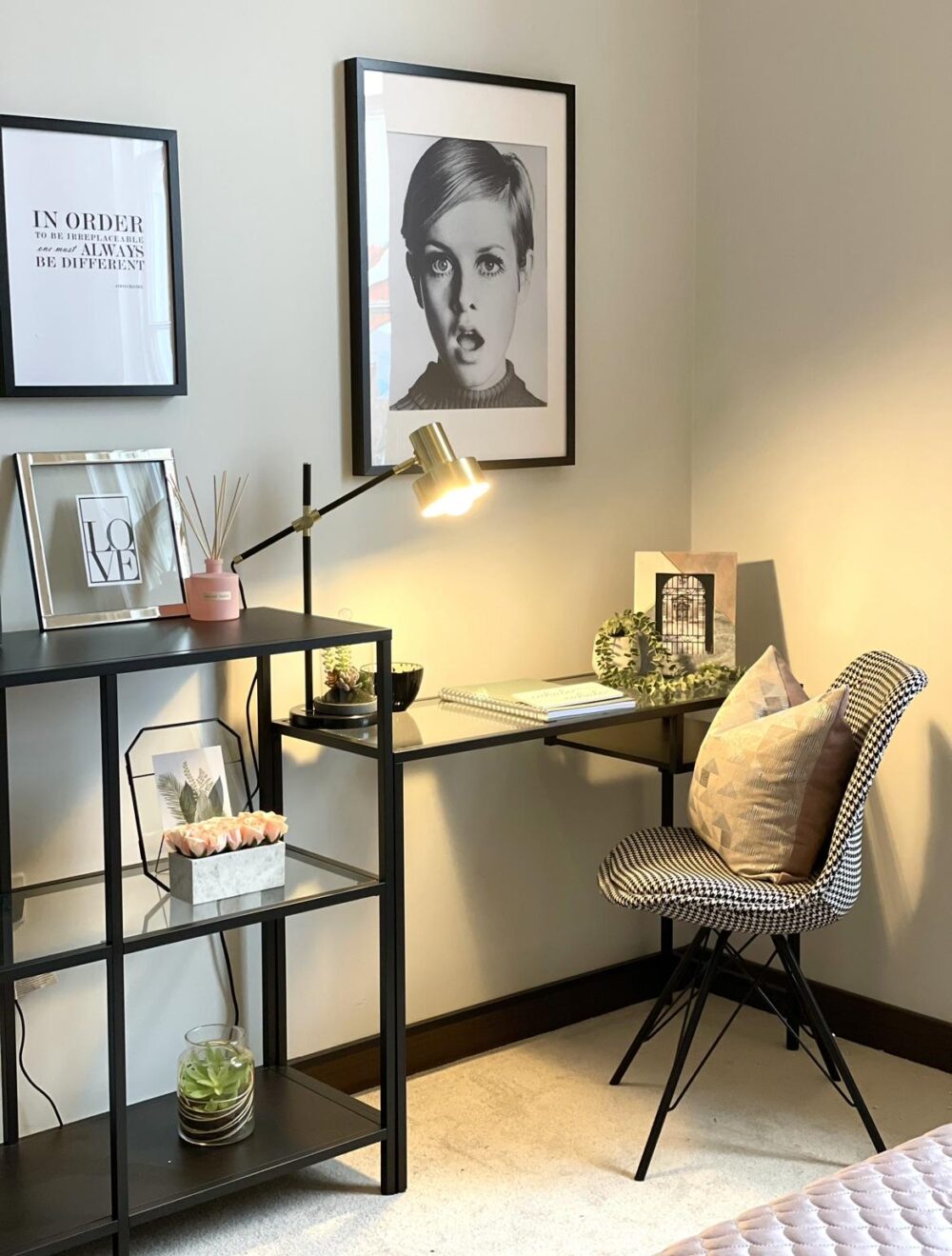
Age-old feng shui says walls block energy and “the forces of creativity”, so it decrees that a desk should go in the middle of a room, which is hardly practical. A window is permitted… but daytime glare may obscure your computer screen. So hang elegant sheers to filter the light, or simply tape some sturdy cardboard to the back of your monitor. To shed more light, a half-size classic Anglepoise lamp can plug into a USB port. Find cordless rechargeable lights and a huge choice of desks at Wayfair (wayfair.co.uk).
WFH design: a final word
“Designing your life is as important as designing your space,” says Will Knight, strategy and content consultant with a string of industry events under his belt, notably London Design Festival and 100% Design. “Get up, have breakfast, shower and change into something more than pyjamas. Have a routine, with family time factored in. I really would hate now to be tied to an ‘office’ – though a breakout café is useful, and even a London club.”
WORKING FROM HOME: A PROFESSIONAL’S STORY
Over the last nine years, public relations chief Sabine Zetteler has grown her eponymous east London communications agency from a single desk to a fully staffed office. However, like so many businesses, Zetteler had to completely rethink its set-up and systems in the face of Covid-19.
“When the pandemic struck, closing our office seemed the only sensible option at the time, and we did it quickly. I told the team to take whatever they needed for their own workspace – chairs, computers, lamps and so on – and we were all working from home two weeks before the rest of the country.
“We learned our lessons very quickly. If you work from home very occasionally, you can get by on a table and laptop, but when it becomes a long-term thing, it’s important for your productivity and sanity to have a clearly defined, appealing workspace that you can transition into and out of, thus making the essential mental distinction between work time and home life.
“I rearranged my furniture to create a distinct working corner where I could have Zoom meetings without having the entire flat in the background, which gave my partner some privacy when he was also using the space.
“Most of our work as an agency can be done online. We don’t need anything like as much space for paper and books and magazines as we used to. I work from a MacBook, on an heirloom desk made by my mother’s father in Finland many moons ago, with a Portuguese cafe chair from Conran, a Margaret Howell for Anglepoise lamp, and manage all the electrics with beautiful, fabric-covered extension leads from Watt-Watt, which bring colour into the space.
“For a home office to work, you have to define time as well as space, to do as much as you can to prevent the domestic and the professional sides of your life from bleeding into each other. Rest matters. Each morning before I start work, I do my household chores, so there are no domestic distractions during the day. Then I take a walk around the neighbourhood or to the Walthamstow Marshes at the end of our road – this helps me mentally to transition back into ‘work mode’ and gather my thoughts for the day ahead.
“Then when the day is finished, I tidy the desk, close my laptop and physically put it in my backpack. These little rituals serve as bookends to the working day. They help maintain a sense of balance and control.
“In some ways, I’m grateful for what the last 18 months has taught us about how we work. Previously, I would never have chosen home working as an approach for my team. I believed we were dependent on physical proximity to collaborate effectively and to be properly creative. The logistics of a Zoom meeting schedule would have phased me. Now I look back to the old model, and I think of us in the office all day, every day, sitting down next to each other just to go through our respective emails, and the whole idea seems absurd.
“Even before Covid, that full-time office barely accommodated the realities of everyday life: the Tube strikes, the demands of health and parenting, the parcel deliveries and the boiler repairs and the doctor’s appointments. Traditional working culture sees these things as anti-productive, as inconveniences to be tolerated, rather than just an inevitable part of life for everyone. The experience of having my team working from home has convinced me that the old model was often unfair and unfit for purpose.
“I’m not ready to leave the office entirely and I don’t actually want to run a company where we’re never together, but I do think we need to reassess its function. It shouldn’t be somewhere that exists simply to contain your employees for eight hours a day.”